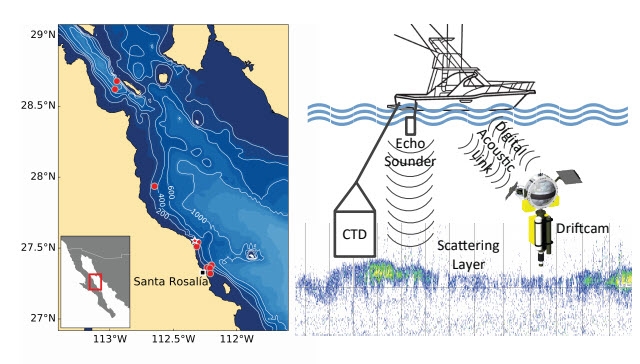| Developer(s) | Microsoft |
|---|---|
| Operating system | Microsoft Windows |
| Predecessor | Microsoft Help 2 |
| Type | Help system |
Microsoft Help Viewer (HV) is the offline help system (local help) developed by Microsoft that ships with Visual Studio 2010 and its associated MSDN Library.
Microsoft Help Viewer 1.x supersedes Microsoft Help 2 which is the help system used by Microsoft Visual Studio 2002/2003/2005/2008 and Office 2007. It is shipped with VS 2010. Microsoft Help Viewer 2.x is backwards-compatible with 1.x and is shipped with the operating system as well as VS 2012+.
This is a new product and does not use any of the old help 2 code base. During development it was referred to as MS Help 3.x. With the growing need for a general Unicode based help system, it has the potential of becoming the next general help system for Windows.
History[edit]


Find the best information and most relevant links on all topics related toThis domain may be for sale! The Summerville Police Department’s Explorer Program was established in 1992 to provide a positive setting for young people to interact with law enforcement officers, further their education, encourage their participation in rewarding and productive service activities and possibly interest them in a law enforcement career. A unique AI based method of assessing reading ” Current reading assessments are simply not good enough. When we look at a standard test score in isolation, it tells us a child can’t read. It doesn’t tell us why that child can’t read. Help Explorer Viewer is a full-featured help viewer for both Windows and Linux. One of its main advantages is 100% support of the WinHelp (.hlp), MS HTML Help 1.x (.chm) and MS Help 2.0 (.HxS.
- Jan 2008 - April Reagan [MS PM] blogs that Microsoft will replace Microsoft Help 2.
- Apr 2009 - At WritersUA 2009 conference April Reagan and Anand Raman announced Microsoft Help 3 will ship with Visual Studio 2010.
- Nov 2009 - Preview of new offline help ships with the VS 2010 Beta 2.
- Jan 2010 - Formal name changed from Microsoft Help 3.0 to Microsoft Help Viewer 1.0
- April 2010 - Microsoft Help Viewer 1.0 is RTM (Release to Manufacturing) as part of the Visual Studio 2010 release.
- March 2011 - Microsoft Help Viewer 1.1 ships with Service Pack 1 of Visual Studio 2010.
- August 2012 - Microsoft Help Viewer 2.0 ships with Visual Studio 2012 and the Windows 8 OS.
Windows Explorer Help
The HelpPane Viewer is found in Windows 10. The version appears to be 2.3.
User Experience[edit]
The user experience for Microsoft Help Viewer 1.x is that topics can be viewed in any installed web browser – a separate application, such as the Microsoft Document Explorer included with Microsoft Help 2, is not necessary. The browser-based model is meant to provide a more lightweight navigation, downloading, and reading experience than earlier help-viewer models.
Visual Studio 2010 includes a taskbar applet in the Windows notification area (system tray) that arbitrates between viewing offline help and online help in the browser when F1 is pressed, and resolves help topic URIs to the proper topic page. It also includes a 'library manager' application to manage the download, installation and uninstallation of help topics on the system, as well as whether to prefer online help when connected to the Internet.
Microsoft Help Viewer 2.0 uses a COM runtime library, so the taskbar applet is no longer used. The format is unchanged.[1] The runtime API is accessible via .NET dlls used in VS2012 and Windows 8; they are equivalent except for a name change.[2] VS2012 ships a more sophiscated toolkit (HlpViewer and HlpCtntMgr), while Windows 8 only has a one-pane HelpPane program.[3]

File format[edit]
Help files from Microsoft Help Viewer have a .mshc file extension. They are ordinary Zip files containing HTML documents. Special meta tags are provided for navigation, and there is support for signing the help bundle.[4]
References[edit]
- ^'Help Viewer - MSHelpWiki'. mshelpwiki.helpmvp.com.
- ^'HV2 API Calls - Microsoft Help Viewer 2.0'. helpware hv2.
- ^'Microsoft Help Viewer 2.0'. hv2 ,helpmvp.
- ^'Help File Format - Microsoft Help Viewer 2.0'. helpware hv2.
See also[edit]
External links[edit]

Exploratory programming is an important part of the software engineering cycle: when a domain is not very well understood or open-ended, or it's not clear what algorithms and data structures might be needed for an implementation, it's useful to be able to interactively develop and debug a program without having to go through the usual constraints of the edit-compile-run-debug cycle. Languages such as APL, Cecil, C#,[1]Dylan, Factor, Forth, F#, J, Java,[2]Julia, Lisp, Mathematica, Obliq, Oz, Prolog, Python, REBOL, Perl, R, Ruby, Scala, Self, Smalltalk, Tcl, and JavaScript, often in conjunction with an IDE, provide support for exploratory programming via interactivity, dynamicity, and extensibility.
Formal specification versus exploratory programming[edit]
For some software development projects, it makes sense to do a requirements analysis and a formal specification. For other software development projects, it makes sense to let the developers experiment with the technology and let the specification of the software evolve depending upon the exploratory programming.
Similarity to Breadboarding[edit]
A similar method of exploration is used in electronics development, called Breadboarding, in which various combinations can quickly be tried and revised, accepting the tradeoff that the result is definitely temporary in nature.
See also[edit]
Notes[edit]
Explorer Help Tab
- ^through Microsoft Visual Studio
- ^through its JShellread-eval-print loop interpreter introduced in version 9
References[edit]
Explorer Help Button
- Rajib Mall (1 August 2004). Fundamentals of Software Engineering. PHI Learning Pvt. Ltd. p. 32. ISBN978-81-203-2445-9.